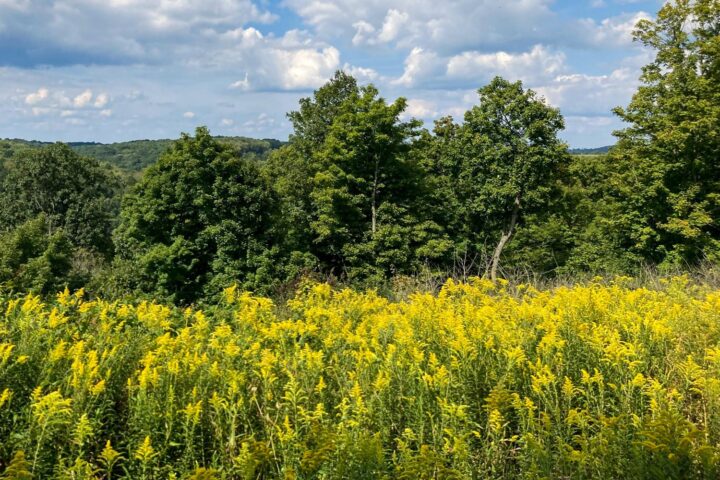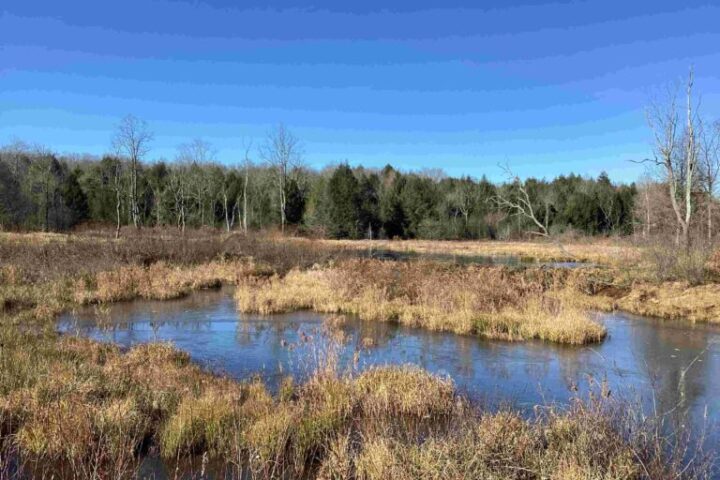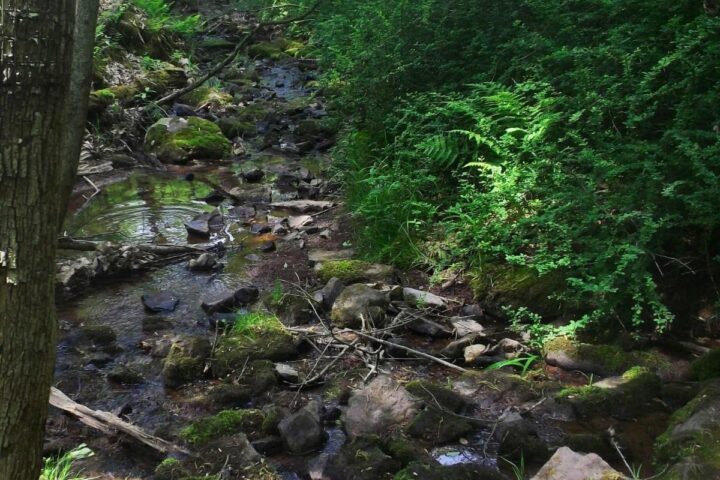 Coinciding with the 25th anniversary of the signing of the Americans with Disabilities Act, Hawk Mountain enters a new age of outdoor accessibility with the opening of its first Accessible Trail to the nearby South Lookout. This trail features a slope of less than 8.3 percent, which falls below the federal guidelines for national parks. As no guidelines yet exist for state or local parks, Hawk Mountain is setting a new model for accessibility in outdoor areas.
Coinciding with the 25th anniversary of the signing of the Americans with Disabilities Act, Hawk Mountain enters a new age of outdoor accessibility with the opening of its first Accessible Trail to the nearby South Lookout. This trail features a slope of less than 8.3 percent, which falls below the federal guidelines for national parks. As no guidelines yet exist for state or local parks, Hawk Mountain is setting a new model for accessibility in outdoor areas.
The grand opening of the trail will be held Sunday, July 26 at 3:00 pm.
The event launch will include a bagpipe parade from the South Lookout along new trail down to event staging area. Welcome by Jerry Regan. Presentation of colors by Troop #621. Pledge of Allegiance led by Representative Jerry Knowles. Sponsor Acknowledgement. Picnic lunch opens.
About the Accessible Trail
Since its founding in 1934, Hawk Mountain Sanctuary has carefully maintained a natural Appalachian forest experience. However, the rugged terrain limits access to its closest overlook just 100 yards from the parking area. With a grade that far exceeds ADA standards, even the wide and groomed trail to this area was a challenge to visitors with small children, and to a greater extent, those with limited mobility. For individuals who use a wheelchair, the South Lookout has been inaccessible except by a motorized chair.
Hawk Mountain has consistently received feedback from individuals with fond memories made over a lifetime at the Sanctuary, but could only walk inside the Visitor Center. They have shared with staff that although the South Lookout is less than a city block away, they could not navigate their canes or walkers or wheelchairs there. This scenic overlook is a major attraction in and of itself, and people don’t come to Hawk Mountain to stay indoors, but to witness the big views of the mountain and the migration.
This project will help to boost visitation by making it fully accessible for all people and much more enjoyable for families with small children.
Trail features
- Slope of less than 8.3 percent grade, and in fact, most areas are far below
- Addition of more than 200 native plantings
- Retaining walls built using local, native stone unearthed during trail construction
- Natural stone finish and work to address storm water runoff
- Accessible walkway extends to trailside restrooms
- Bench seating installed after every rise to provide areas for rest along the way
- New trail entrance, dressed with native plantings, to create a sense of arrival
- New timber frame trail entrance structure where volunteers greet visitors
For more information, contact Mary Linkevich, Director of Communications and Grants at [email protected] or 610-756-6000 x211.




